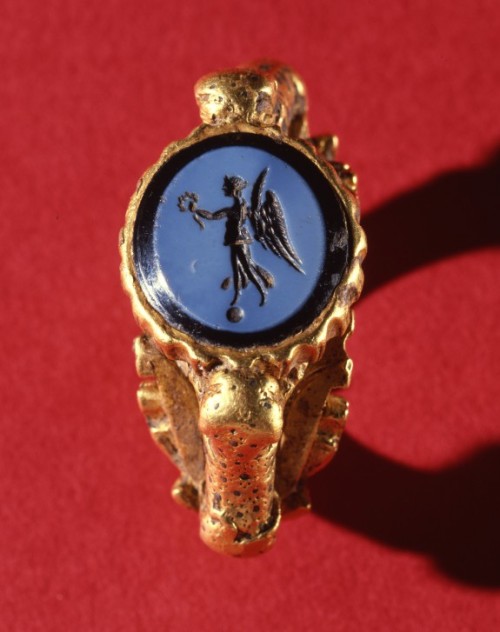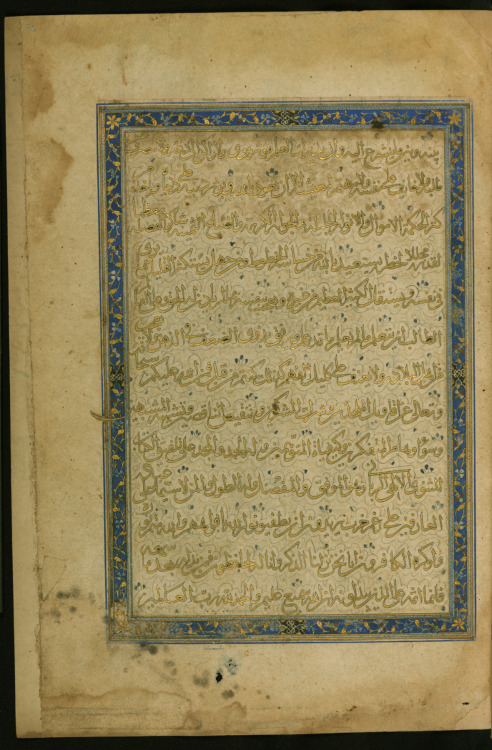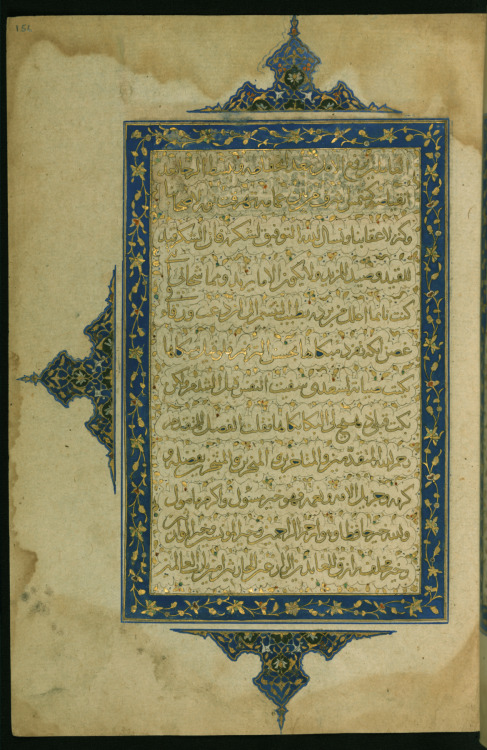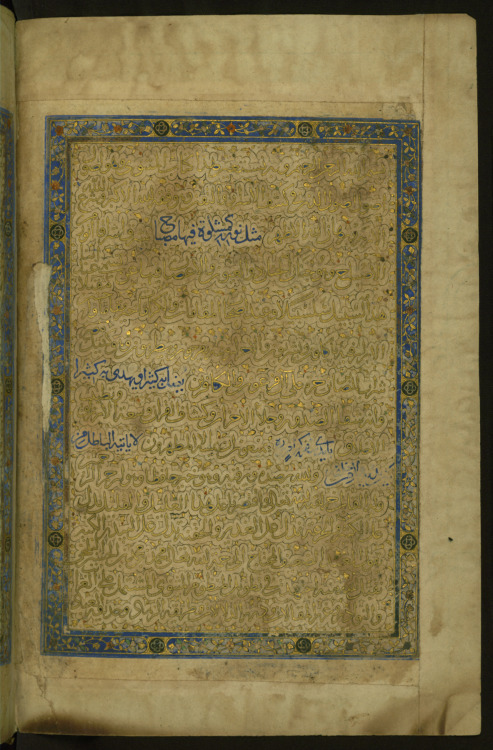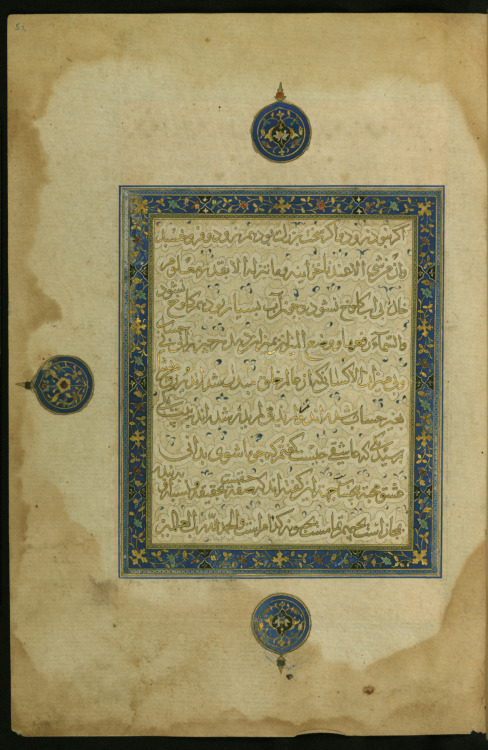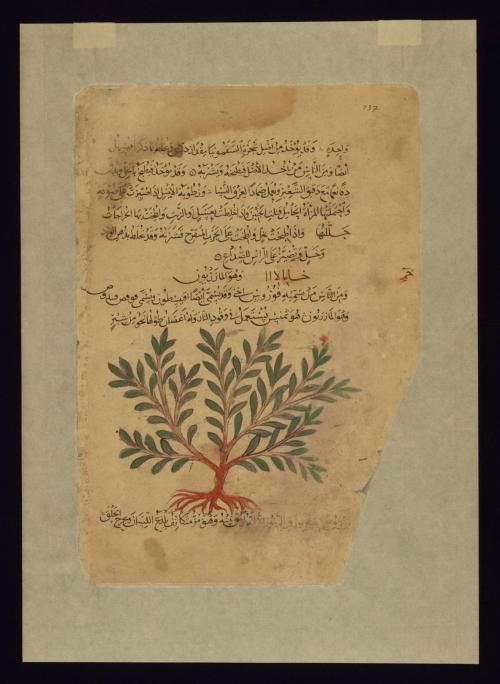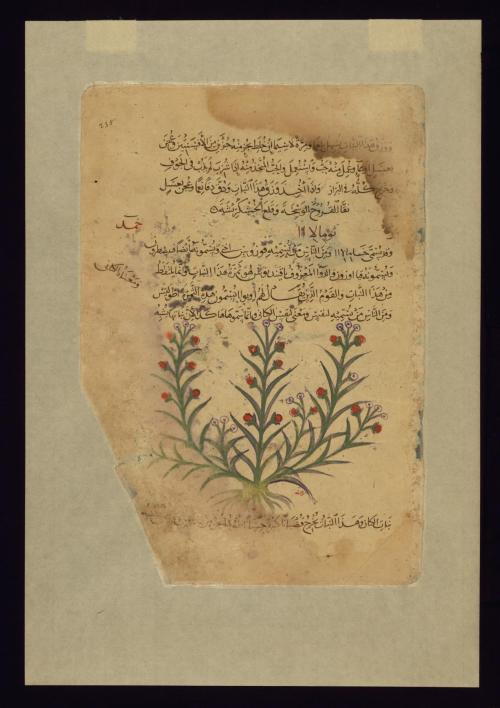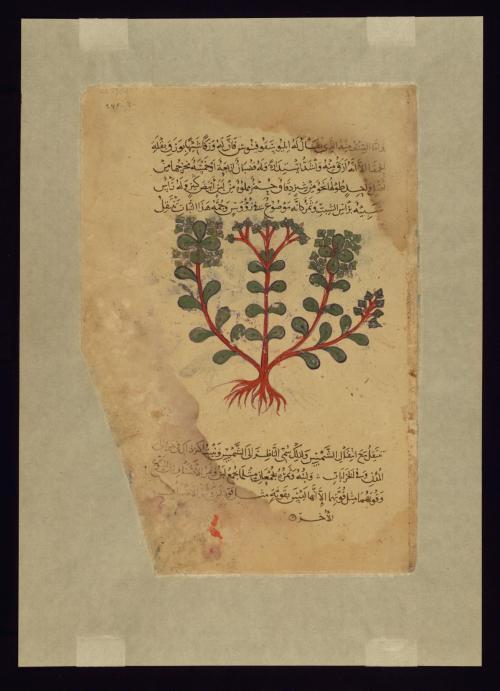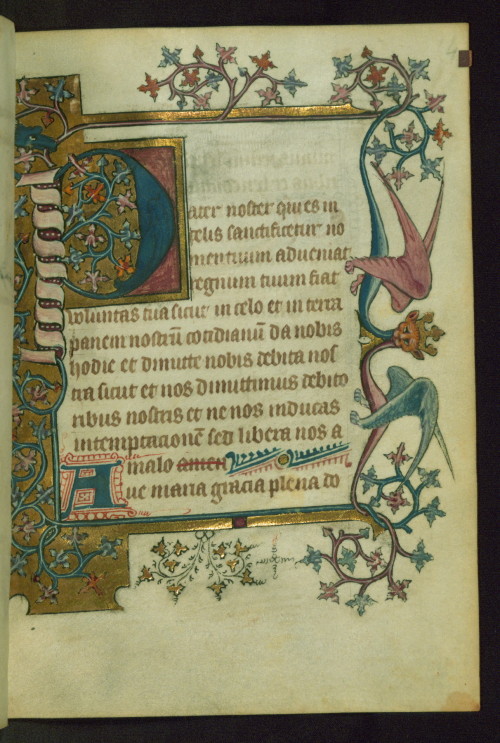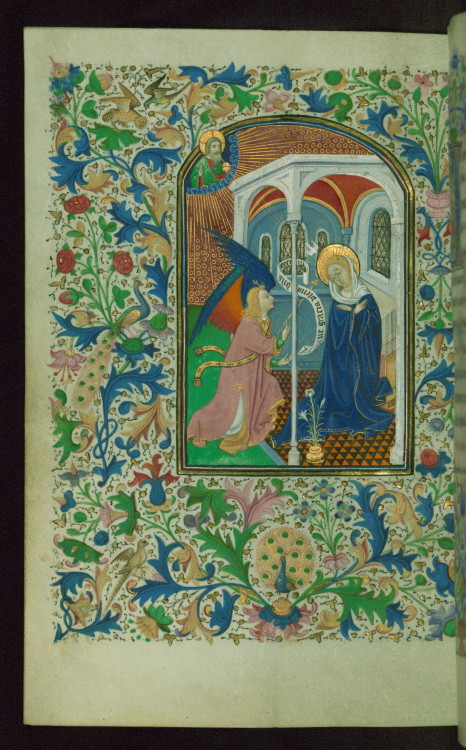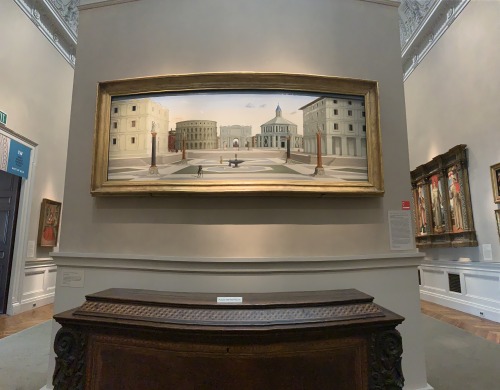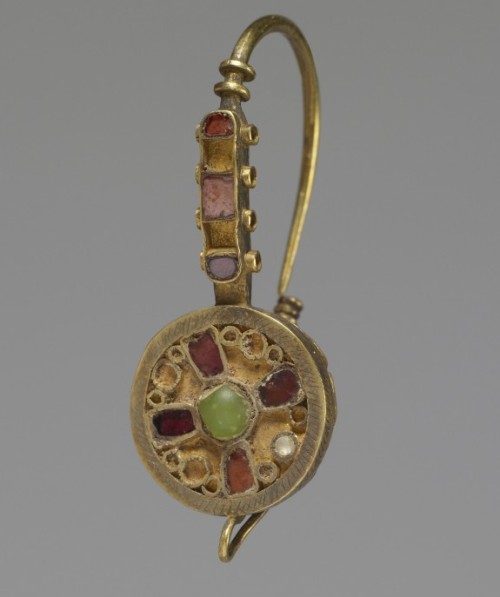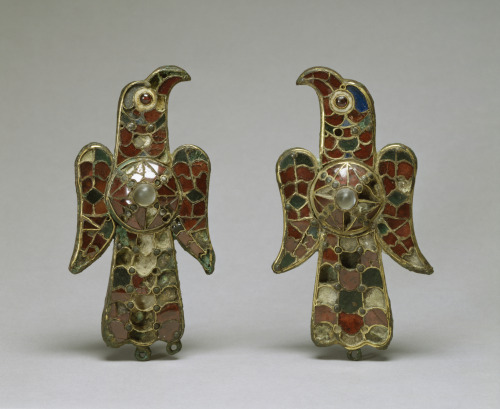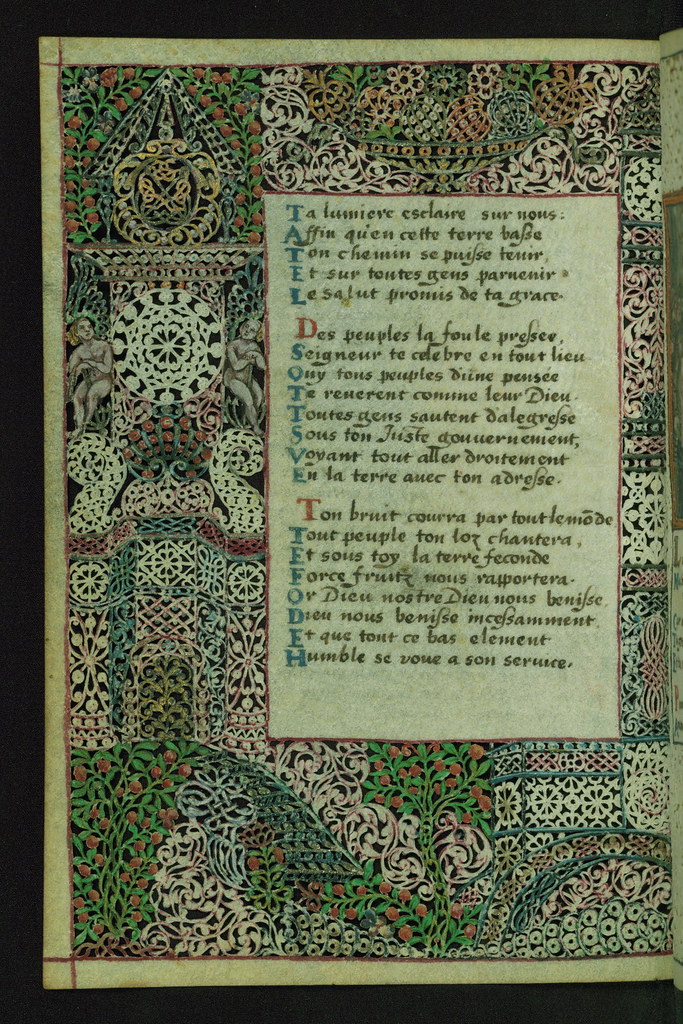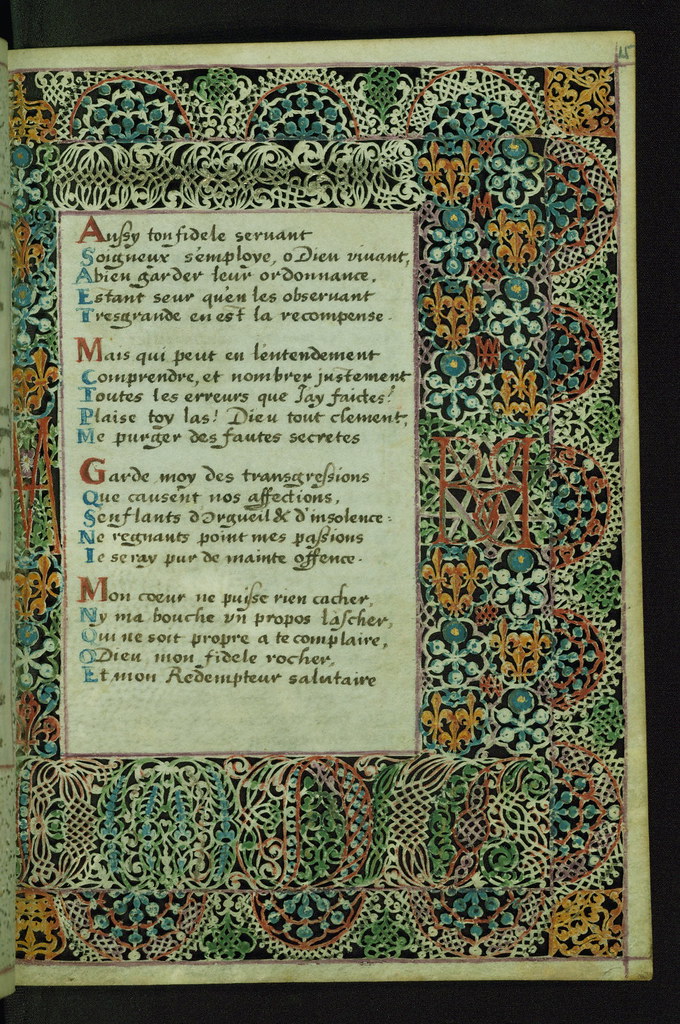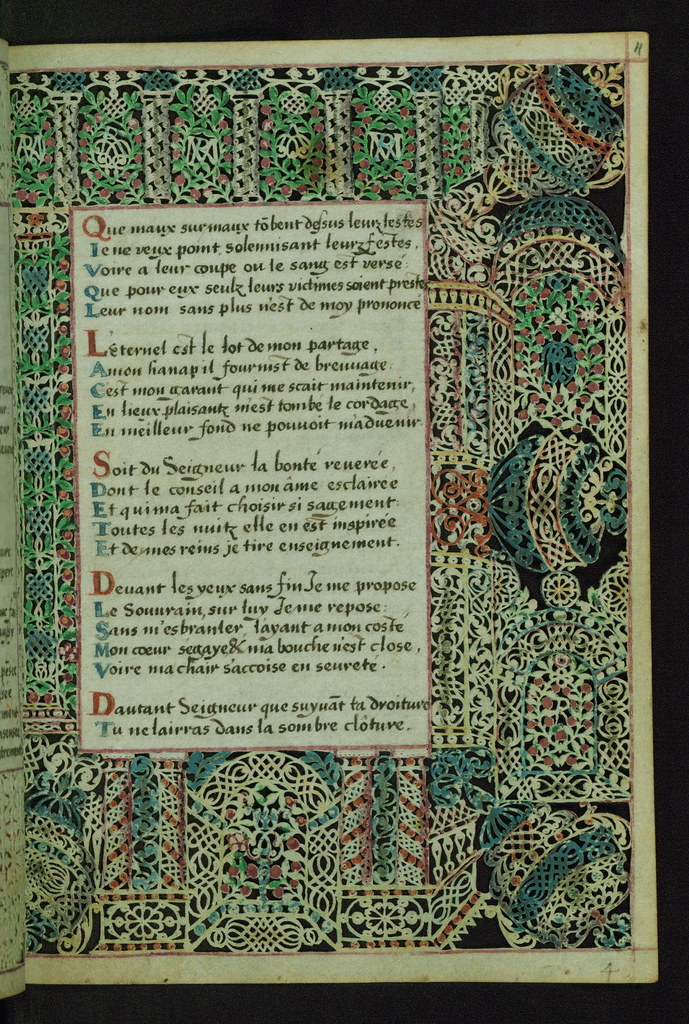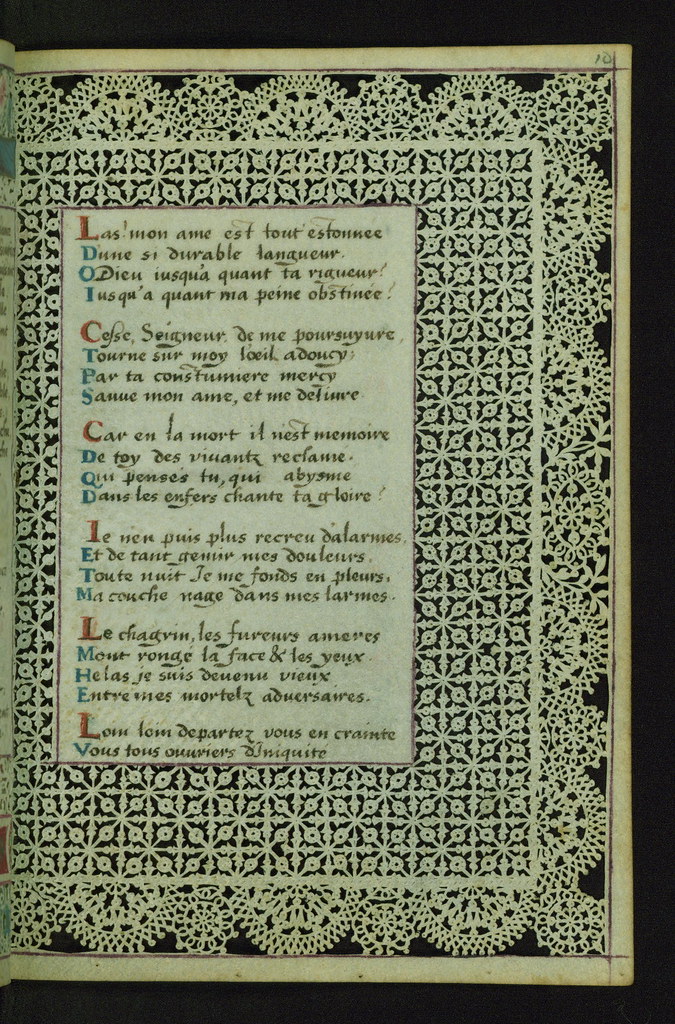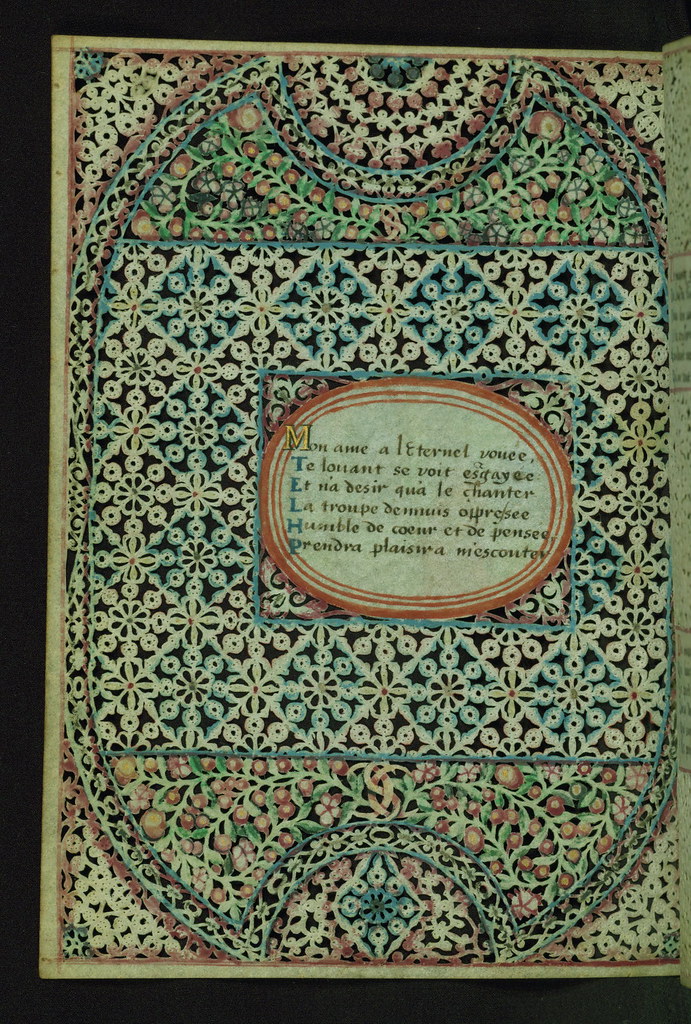#walters art museum
Ring with an intaglio of Nike (Victory) held up by leopards. This ring was most likely a reward given by an emperor to a successful military leader.
Byzantine, 4th century (Late Antique)
Source:Walters Art Museum
Post link
Illuminated Preface to the Third Book of the Collection of Poems (masnavi), W.625 by Jalas al-Din Rumi, MaulanaandAhmad ibn Hajji Abi Bakr al-Katib, Iran c. 1461 via Walters Art Museum, Creative Commons
Post link
Book of Hours, W.215 by unknown creator, Flemish ca. 1400-1415 via Walters Art Museum, Creative Commons
Post link
Illuminated Preface to the Fourth Book of the Collection of Poems (masnavi), W.625 by Jalas al-Din Rumi, MaulanaandAhmad ibn Hajji Abi Bakr al-Katib, Iran c. 1461 via Walters Art Museum, Creative Commons
Post link
Illuminated Preface to the First Book of the Collection of Poems (masnavi), W.625 by Jalas al-Din Rumi, MaulanaandAhmad ibn Hajji Abi Bakr al-Katib, Iran c. 1461 via Walters Art Museum, Creative Commons
Post link
Illuminated Preface to the Second Book of the Collection of Poems (masnavi), W.625 by Jalas al-Din Rumi, MaulanaandAhmad ibn Hajji Abi Bakr al-Katib, Iran c. 1461 via Walters Art Museum, Creative Commons
Post link
Four Leaves from the Arabic Version of Dioscorides’ De materia medica, W.750 by Dioscordines Pedanius, of Anazarbos and translated by Yuhana bin al-Batriq, Iran ca. 13th century via Walters Art Museum, Creative Commons
Top Row, Left to Right: 1) Mezereon (Spurge-olive)2)Wild Cucumber
Bottom Row, Left to Right: 1) Thymelaea (Spurge-laurel)2)A Type of Thymelaea Called ilyusqufinus
Post link
Book of Hours, W.215 by unknown creator, Flemish ca. 1400-1415 via Walters Art Museum, Creative Commons
Post link
Book of Hours, W.220, by “Circle of Willem Vrelant”, Bruges, Belgium ca. 1450-1455, via Walters Art Museum, Creative Commons
Post link
Statue of Taweret, the Ancient Egyptian Goddess of Childbirth; protector of women.Piece located at the Walter’s Art Museum in Maryland.
Post link
The Ideal City, Florentine Painting, circa 1480, Walters Art Gallery, Baltimore, 2019.
Perhaps because of my education as an urbanist, this is my favorite single painting in the Walters. It is one of a set now dispersed amongst several museums illustrating the 15th century’s newly perfected art of perspective. I would love to see the set in a single location for a special exhibition.
Post link
Basket Earring
Lombardic / Langobardic
Late sixth- seventh century CE
Gold with garnets and glass paste
“One of the most common types of Langobardic jewelry, the basket earring derives its name from the hemispherical "basket” of gold wire as in this example. The front disk of gold is inlaid with gold wire cells for four red glass or garnet inserts arranged like the arms of a cross around a central, circular cell filled with a rounded green stone or glass. A triad arrangement of one large and two small circular gold wire circlets fills the space between the garnet inlays and creates a ring around the cross. A thick, flattened lip of gold decorated with hatching and cross-hatching overlays the outer edge of the disk where it joins the basket. On the front of the hoop are a row of five cells for red glass or garnet inlays, of which three are still filled. The sides of the hoops are decorated with a row of four wire circlets. A loop attached to the base of the earring once suspended an additional pendant.“
In the collection of the Walters Art Museum. Image and description taken from the object’s page on the Walters Art Museum website. Visit the objects’ page for additional images (in which you can see the "basket” described above) and zoom capability.
Post link
Pair of Eagle Fibula
Visigothic
Sixth century CE
Gold over bronze with gemstones, glass, and meerschaum (a soft white mineral)
“Walters 54.421 and 54.422 are a pair of superb eagle-shaped fibula found at Tierra de Barros (Badajoz, southwest Spain) made of sheet gold over bronze inlaid with garnets, amethysts, and colored glass. Pendants once dangled from the loops at the bottom. The eagle, a popular symbol during the Migration period adopted from Roman imperial insignia, was favored by the Goths. Similar eagle-shaped fibulae have been excavated from Visigothic graves in Spain and Ostrogothic graves in northern Italy, but this pair is one of the finest. These fibula would have been worn at the same time to fasten a cloak at either shoulder.”
In the collection of the Walters Art Museum. Image and description taken from the object’s page on the Walters Art Museum website. Visit the objects’ page for additional images and zoom capability.
Post link
Lace Book of Marie de’ Medici, Lace margins, Walters Manuscript W.494, Folio 17v by Walters Art Museum
Via Flickr:
This Prayerbook was made for Marie de’ Medici in the second quarter of the seventeenth century. Beyond its provenance as a personal book owned by the famous queen, it is exceptional for its intricately cut borders, which transform the parchment margins into lace. This effect was created using a technique known as “canivet,” in which a small knife was used to cut ornate patterns into paper or parchment. An art form that flourished originally among nuns in France, Germany, and the Netherlands beginning in the sixteenth century, it was employed to exceptional effect in several manuscripts connected with Marie de’ Medici. The Walters manuscript, made for her while she was regent of France, and wife of King Henry IV, contains twenty-eight miniatures, including original religious imagery as well as several later additions: a gouache portrait of the elderly queen, and nine small miniatures produced in Bruges ca. 1450 by an artist influenced by the Eyckian and Gold Scrolls styles prevalent at the time; the coat-of-arms of Marie de Medici, as well as her monogram. The Walters manuscript retains its original binding composed of mosaic inlays in green and black leather, as well as fine gilt pointillé foliate tooling, and a replica of the binding was created by Léon Gruel for Henry Walters on one of his seventeenth-century printed books (92.467) that also connects to Marie de’ Medici. All manuscript images and descriptions were created and are provided through Preservation and Access grants awarded to the Walters Art Museum by the National Endowment for the Humanities, 2008-2014. Access a complete set of high-resolution archival images of this manuscript for free on the Digital Walters at www.thedigitalwalters.org/Data/WaltersManuscripts/html/W494/
Lace Book of Marie de’ Medici, Lace margins, Walters Manuscript W.494, Folio 15r by Walters Art Museum
Via Flickr:
This Prayerbook was made for Marie de’ Medici in the second quarter of the seventeenth century. Beyond its provenance as a personal book owned by the famous queen, it is exceptional for its intricately cut borders, which transform the parchment margins into lace. This effect was created using a technique known as “canivet,” in which a small knife was used to cut ornate patterns into paper or parchment. An art form that flourished originally among nuns in France, Germany, and the Netherlands beginning in the sixteenth century, it was employed to exceptional effect in several manuscripts connected with Marie de’ Medici. The Walters manuscript, made for her while she was regent of France, and wife of King Henry IV, contains twenty-eight miniatures, including original religious imagery as well as several later additions: a gouache portrait of the elderly queen, and nine small miniatures produced in Bruges ca. 1450 by an artist influenced by the Eyckian and Gold Scrolls styles prevalent at the time; the coat-of-arms of Marie de Medici, as well as her monogram. The Walters manuscript retains its original binding composed of mosaic inlays in green and black leather, as well as fine gilt pointillé foliate tooling, and a replica of the binding was created by Léon Gruel for Henry Walters on one of his seventeenth-century printed books (92.467) that also connects to Marie de’ Medici. All manuscript images and descriptions were created and are provided through Preservation and Access grants awarded to the Walters Art Museum by the National Endowment for the Humanities, 2008-2014. Access a complete set of high-resolution archival images of this manuscript for free on the Digital Walters at www.thedigitalwalters.org/Data/WaltersManuscripts/html/W494/
Lace Book of Marie de’ Medici, Transfiguration, Walters Manuscript W.494, fol. 13r by Walters Art Museum
Via Flickr:
This Prayerbook was made for Marie de’ Medici in the second quarter of the seventeenth century. Beyond its provenance as a personal book owned by the famous queen, it is exceptional for its intricately cut borders, which transform the parchment margins into lace. This effect was created using a technique known as “canivet,” in which a small knife was used to cut ornate patterns into paper or parchment. An art form that flourished originally among nuns in France, Germany, and the Netherlands beginning in the sixteenth century, it was employed to exceptional effect in several manuscripts connected with Marie de’ Medici. The Walters manuscript, made for her while she was regent of France, and wife of King Henry IV, contains twenty-eight miniatures, including original religious imagery as well as several later additions: a gouache portrait of the elderly queen, and nine small miniatures produced in Bruges ca. 1450 by an artist influenced by the Eyckian and Gold Scrolls styles prevalent at the time; the coat-of-arms of Marie de Medici, as well as her monogram. The Walters manuscript retains its original binding composed of mosaic inlays in green and black leather, as well as fine gilt pointillé foliate tooling, and a replica of the binding was created by Léon Gruel for Henry Walters on one of his seventeenth-century printed books (92.467) that also connects to Marie de’ Medici. All manuscript images and descriptions were created and are provided through Preservation and Access grants awarded to the Walters Art Museum by the National Endowment for the Humanities, 2008-2014. Access a complete set of high-resolution archival images of this manuscript for free on the Digital Walters at www.thedigitalwalters.org/Data/WaltersManuscripts/html/W494/
Lace Book of Marie de’ Medici, Lace margins, Walters Manuscript W.494, Folio 11r by Walters Art Museum
Via Flickr:
This Prayerbook was made for Marie de’ Medici in the second quarter of the seventeenth century. Beyond its provenance as a personal book owned by the famous queen, it is exceptional for its intricately cut borders, which transform the parchment margins into lace. This effect was created using a technique known as “canivet,” in which a small knife was used to cut ornate patterns into paper or parchment. An art form that flourished originally among nuns in France, Germany, and the Netherlands beginning in the sixteenth century, it was employed to exceptional effect in several manuscripts connected with Marie de’ Medici. The Walters manuscript, made for her while she was regent of France, and wife of King Henry IV, contains twenty-eight miniatures, including original religious imagery as well as several later additions: a gouache portrait of the elderly queen, and nine small miniatures produced in Bruges ca. 1450 by an artist influenced by the Eyckian and Gold Scrolls styles prevalent at the time; the coat-of-arms of Marie de Medici, as well as her monogram. The Walters manuscript retains its original binding composed of mosaic inlays in green and black leather, as well as fine gilt pointillé foliate tooling, and a replica of the binding was created by Léon Gruel for Henry Walters on one of his seventeenth-century printed books (92.467) that also connects to Marie de’ Medici. All manuscript images and descriptions were created and are provided through Preservation and Access grants awarded to the Walters Art Museum by the National Endowment for the Humanities, 2008-2014. Access a complete set of high-resolution archival images of this manuscript for free on the Digital Walters at www.thedigitalwalters.org/Data/WaltersManuscripts/html/W494/
Lace Book of Marie de’ Medici, Lace margins, Walters Manuscript W.494, Folio 10r by Walters Art Museum
Via Flickr:
This Prayerbook was made for Marie de’ Medici in the second quarter of the seventeenth century. Beyond its provenance as a personal book owned by the famous queen, it is exceptional for its intricately cut borders, which transform the parchment margins into lace. This effect was created using a technique known as “canivet,” in which a small knife was used to cut ornate patterns into paper or parchment. An art form that flourished originally among nuns in France, Germany, and the Netherlands beginning in the sixteenth century, it was employed to exceptional effect in several manuscripts connected with Marie de’ Medici. The Walters manuscript, made for her while she was regent of France, and wife of King Henry IV, contains twenty-eight miniatures, including original religious imagery as well as several later additions: a gouache portrait of the elderly queen, and nine small miniatures produced in Bruges ca. 1450 by an artist influenced by the Eyckian and Gold Scrolls styles prevalent at the time; the coat-of-arms of Marie de Medici, as well as her monogram. The Walters manuscript retains its original binding composed of mosaic inlays in green and black leather, as well as fine gilt pointillé foliate tooling, and a replica of the binding was created by Léon Gruel for Henry Walters on one of his seventeenth-century printed books (92.467) that also connects to Marie de’ Medici. All manuscript images and descriptions were created and are provided through Preservation and Access grants awarded to the Walters Art Museum by the National Endowment for the Humanities, 2008-2014. Access a complete set of high-resolution archival images of this manuscript for free on the Digital Walters at www.thedigitalwalters.org/Data/WaltersManuscripts/html/W494/
Lace Book of Marie de’ Medici, John the Baptist baptizing Christ, Walters Manuscript W.494, fol. 8r by Walters Art Museum
Via Flickr:
This Prayerbook was made for Marie de’ Medici in the second quarter of the seventeenth century. Beyond its provenance as a personal book owned by the famous queen, it is exceptional for its intricately cut borders, which transform the parchment margins into lace. This effect was created using a technique known as “canivet,” in which a small knife was used to cut ornate patterns into paper or parchment. An art form that flourished originally among nuns in France, Germany, and the Netherlands beginning in the sixteenth century, it was employed to exceptional effect in several manuscripts connected with Marie de’ Medici. The Walters manuscript, made for her while she was regent of France, and wife of King Henry IV, contains twenty-eight miniatures, including original religious imagery as well as several later additions: a gouache portrait of the elderly queen, and nine small miniatures produced in Bruges ca. 1450 by an artist influenced by the Eyckian and Gold Scrolls styles prevalent at the time; the coat-of-arms of Marie de Medici, as well as her monogram. The Walters manuscript retains its original binding composed of mosaic inlays in green and black leather, as well as fine gilt pointillé foliate tooling, and a replica of the binding was created by Léon Gruel for Henry Walters on one of his seventeenth-century printed books (92.467) that also connects to Marie de’ Medici. All manuscript images and descriptions were created and are provided through Preservation and Access grants awarded to the Walters Art Museum by the National Endowment for the Humanities, 2008-2014. Access a complete set of high-resolution archival images of this manuscript for free on the Digital Walters at www.thedigitalwalters.org/Data/WaltersManuscripts/html/W494/
Lace Book of Marie de’ Medici, Lace margins, Walters Manuscript W.494, Folio 6v by Walters Art Museum
Via Flickr:
This Prayerbook was made for Marie de’ Medici in the second quarter of the seventeenth century. Beyond its provenance as a personal book owned by the famous queen, it is exceptional for its intricately cut borders, which transform the parchment margins into lace. This effect was created using a technique known as “canivet,” in which a small knife was used to cut ornate patterns into paper or parchment. An art form that flourished originally among nuns in France, Germany, and the Netherlands beginning in the sixteenth century, it was employed to exceptional effect in several manuscripts connected with Marie de’ Medici. The Walters manuscript, made for her while she was regent of France, and wife of King Henry IV, contains twenty-eight miniatures, including original religious imagery as well as several later additions: a gouache portrait of the elderly queen, and nine small miniatures produced in Bruges ca. 1450 by an artist influenced by the Eyckian and Gold Scrolls styles prevalent at the time; the coat-of-arms of Marie de Medici, as well as her monogram. The Walters manuscript retains its original binding composed of mosaic inlays in green and black leather, as well as fine gilt pointillé foliate tooling, and a replica of the binding was created by Léon Gruel for Henry Walters on one of his seventeenth-century printed books (92.467) that also connects to Marie de’ Medici. All manuscript images and descriptions were created and are provided through Preservation and Access grants awarded to the Walters Art Museum by the National Endowment for the Humanities, 2008-2014. Access a complete set of high-resolution archival images of this manuscript for free on the Digital Walters at www.thedigitalwalters.org/Data/WaltersManuscripts/html/W494/
Lace Book of Marie de’ Medici, Flight into Egypt, Walters Manuscript W.494, fol. 6r by Walters Art Museum
Via Flickr:
This Prayerbook was made for Marie de’ Medici in the second quarter of the seventeenth century. Beyond its provenance as a personal book owned by the famous queen, it is exceptional for its intricately cut borders, which transform the parchment margins into lace. This effect was created using a technique known as “canivet,” in which a small knife was used to cut ornate patterns into paper or parchment. An art form that flourished originally among nuns in France, Germany, and the Netherlands beginning in the sixteenth century, it was employed to exceptional effect in several manuscripts connected with Marie de’ Medici. The Walters manuscript, made for her while she was regent of France, and wife of King Henry IV, contains twenty-eight miniatures, including original religious imagery as well as several later additions: a gouache portrait of the elderly queen, and nine small miniatures produced in Bruges ca. 1450 by an artist influenced by the Eyckian and Gold Scrolls styles prevalent at the time; the coat-of-arms of Marie de Medici, as well as her monogram. The Walters manuscript retains its original binding composed of mosaic inlays in green and black leather, as well as fine gilt pointillé foliate tooling, and a replica of the binding was created by Léon Gruel for Henry Walters on one of his seventeenth-century printed books (92.467) that also connects to Marie de’ Medici. All manuscript images and descriptions were created and are provided through Preservation and Access grants awarded to the Walters Art Museum by the National Endowment for the Humanities, 2008-2014. Access a complete set of high-resolution archival images of this manuscript for free on the Digital Walters at www.thedigitalwalters.org/Data/WaltersManuscripts/html/W494/

Detail of an ancient Egyptian coffin panel, decorated in three zones: top, uraeus-symbols and Ma'at-feathers; middle, a religious text; bottom, various depictions of Osiris and the sun-god Re. Artist unknown; ca. 1070-945 BCE (Third Intermediate Period). From Thebes; now in the Walters Art Museum, Baltimore. Photo credit: Walters Art Museum.

